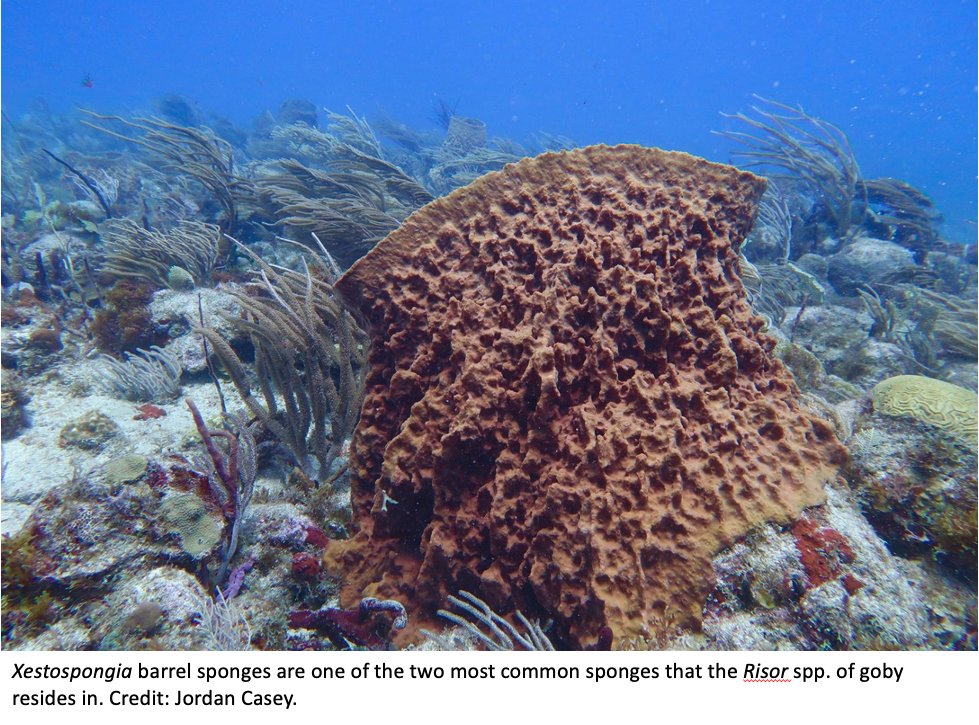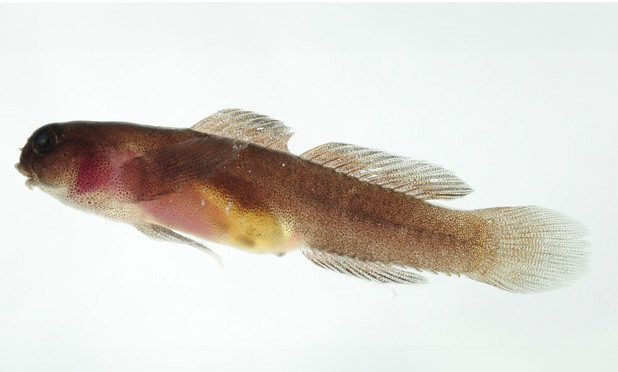 Fish about the size of your thumbnail, called cryptobenthic fish, account for more than half of the fauna within coral reef ecosystems. A newly released study in the journal Coral Reefs documents how researchers use network analysis to determine the relationship between the genetic diversity of a cryptobenthic fish and its habitat preference. Coral reefs are one of the most diverse ecosystems on the planet, but many cryptobenthic fish species remain undescribed; yet, these fishes play a major role in coral reef nutrient cycles.
Fish about the size of your thumbnail, called cryptobenthic fish, account for more than half of the fauna within coral reef ecosystems. A newly released study in the journal Coral Reefs documents how researchers use network analysis to determine the relationship between the genetic diversity of a cryptobenthic fish and its habitat preference. Coral reefs are one of the most diverse ecosystems on the planet, but many cryptobenthic fish species remain undescribed; yet, these fishes play a major role in coral reef nutrient cycles.
This study identified seven distinct lineages of the tusked goby, Risor ruber, a sponge-dwelling cryptobenthic fish. Of the seven lineages, researchers determined that five lineages are habitat generalists that inhabit many types of sponges while the other two lineages are habitat specialists that only inhabit one type of sponge.
“This research is a great example of how network analysis can be applied to networks found in nature to visualize and analyze these associations,” said lead author and undergraduate alumna from the University of Texas Austin Ariel Wang. “By building a network with the sponge-fish association data and running null models for comparison, patterns within the associations that differ from random can be quickly identified.”
This research offers a comprehensive assessment of the importance of understanding genetic diversity in the face of increasing anthropogenic impacts on coral reef fish communities. Coral reefs are rapidly changing, and sponge specialists are more likely to lose their primary habitat and face extinction. Documenting and understanding genetic diversification is imperative, especially in understudied, vulnerable organisms such as cryptobenthic reef fishes.
This study illustrates how marine science research and computational tools can be used in tandem to reshape scientific discovery. In addition, this study highlights the importance of understanding the larger-than-size role that undescribed cryptobenthic fish play in their ecosystems through an examination of genetic diversity and habitat specialization patterns.
The study was led by Ariel Wang, undergraduate student at The University of Texas Marine Science Institute (UTMSI) and joined by coauthors Sarah Yerrace, graduate student at The University of Washington (UW); Luke Tornabene, Associate Professor at UW; Simon Brandl, Assistant Professor at UTMSI; Christopher Freeman, Visiting Assistant Professor at The College of Charleston; Carole C. Baldwin, Research Zoologist at The Smithsonian Institution; and Jordan Casey, Assistant Professor at UTMSI.
The research was supported by the University of Texas Marine Science Institute (JMC), Smithsonian MarineGEO Postdoctoral Fellowship (SJB), the University of Washington School of Aquatic and Fishery Sciences and the William W. and Dorothy T. Gilbert Ichthyology Research Fund (LT), Smithsonian’s National Museum of Natural History Research Program and the Prince Albert II of Monaco Foundation (CCB), and UT-Austin College of Natural Science Experiential Learning Scholarship (AW).









